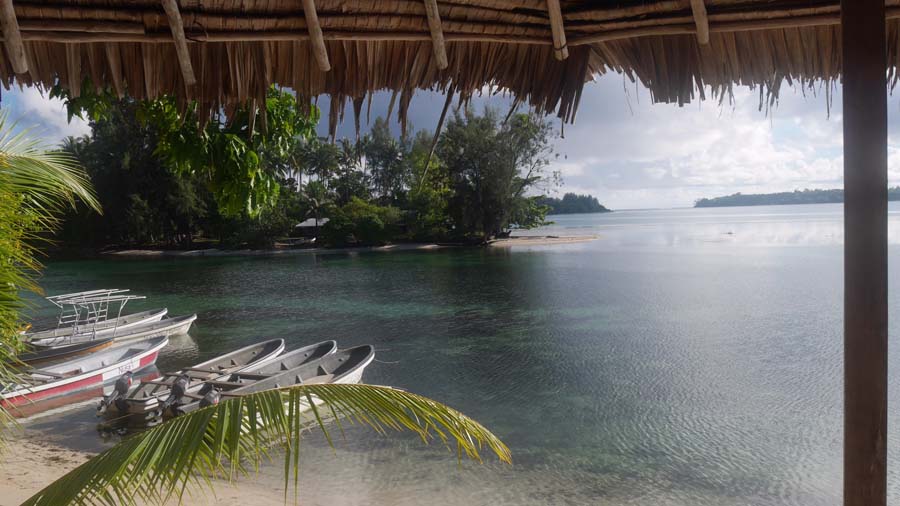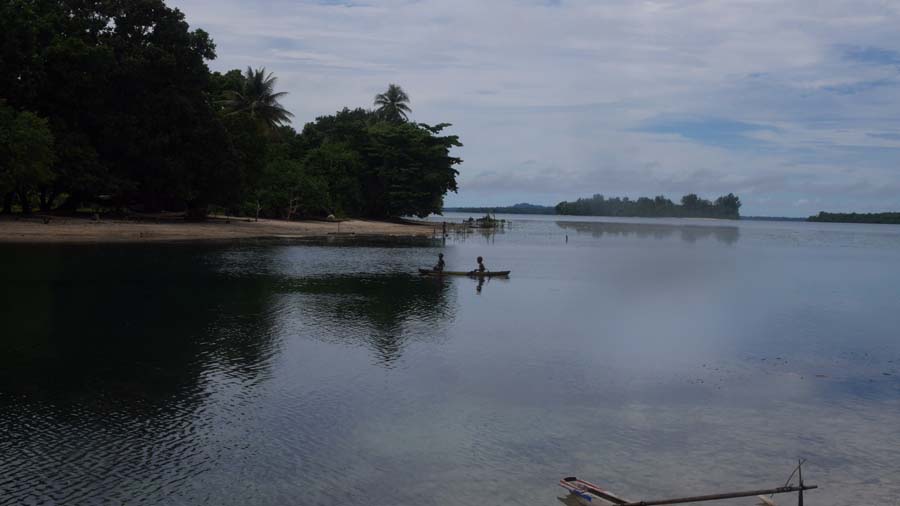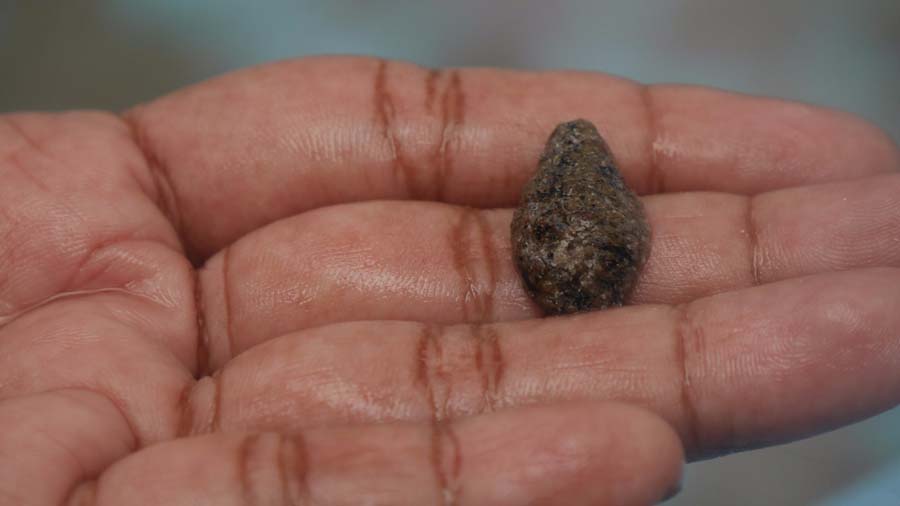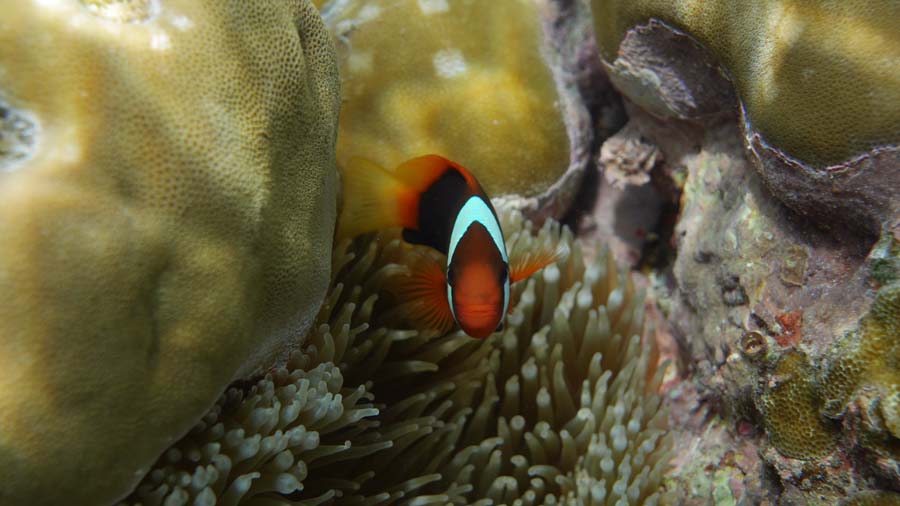Volcanoes, planes rides and sea cucumbers – Hard times in PNG
By Lachlan Dennis
After a quick scramble to make the connection from Port Moresby I’m there. On a plane to tropical Kavieng for a week. With much of the plane full of ACIAR researchers we fly past the smoking craters dotting New Britain and Tavurvur volcano, responsible for the devastation of 1994. Lush rainforest beneath us and aquamarine blue shining up from the fringing reefs. The plane makes a quick stop at Kokopo and lets off three quarters of the passengers, not enough get back on to replace them. The airport is dotted with coconut palms, reef egrets take to wing startled by the arrival of the plane. It’s hard not to imagine a T-rex bursting out of the bush, and John William’s iconic theme to Jurassic Park starts playing in my head. But, before I have time to decide what I would name a dinosaur I discover, the plane is jolting down the runway. The wheels retract with a clunk and we are gone. Next stop Kavieng. By the time we touch down 45 minutes later I’m exhausted. A result of starting from autumnal Canberra at 4:30 am. The tropical sun has gone to bed for the night but left the sticky heat. Stepping out onto the tarmac I have my first chance to look around. I’m here.
The airport at Kavieng is simple. One long-house style building, and a covered porch were we wait for our bags. They arrive on a trolley taken straight from the plane. After picking our bags a solitary baggage handler checks our tickets to make sure we don’t have someone else’s bags and lets us out a garden gate. No muss no fuss. Waiting for us is a Papua New Guinean with bleached blonde hair and his six year old daughter. He loads us into an ageing Land Rover and we travel the bumpy five minutes to the wharf, almost there. One more, quick banana boat ride in the dark across the lagoon and we can see our destination. Nusa Island. Wooden long-houses on stilts over the water. White sand paths and encroaching on it all, more jungle.

We step off the boat into ankle deep water, and ashore. I carry my bag up the steps to my room and have my first look at my sleeping arrangements. Apart from the bird poo on my bed, it’s lovely. Much too big for just me by myself. I fold down the mosquito nets, grab a glass of water from the jug provided and plod across the sand to dinner. Again, far better than I expected: A buffet of local seafood and assorted goodies. I load up a plate and head to the sitting area over the water. I sit back in my chair and look up at the stars. Life is tough sometimes!

The next day starts early. 4:02am to be precise. The same boat that brought me in, in tranquil comfort the night before is surprisingly loud taking other guests to the airport in the morning. After drinking in the vista (and a coffee) for breakfast it’s time to do some work. I get on another of the ubiquitous banana boats with a visiting project leader and his PhD student and we ride back out into the harbor. Crystal clear water glides by underneath us, coral bommies and seagrass beds. All around us are islands, it’s impossible to tell which is the island we seek. But our driver points out a floating sea cage and a jetty. Nago Island. Set at the gateway to the Bismarck Sea a school of baitfish churn under the jetty and the trickle of the outflow signifies that this isn’t a regular island. Clambering off the boat onto the jetty and onto the island itself I can see the facility. A cleared section of forest with a collection of small houses and a high fence with a sign forbidding the chewing of betel nut.

The meetings went well and I got to see interesting things and meet the researchers performing the work (culturing sea cucumbers to try and help local communities develop livelihoods). This is a trip that working in international agricultural research offers. As a grad at ACIAR I am happy that I was able to go on this trip and I look forward to the next one!



